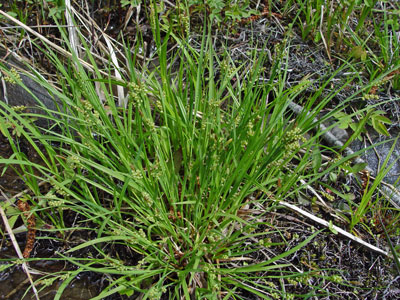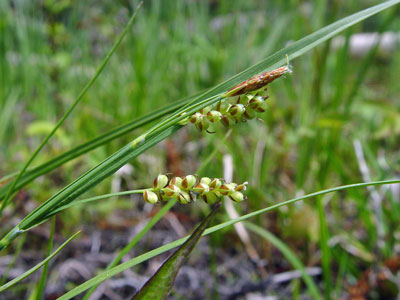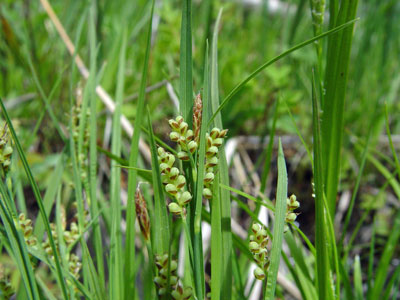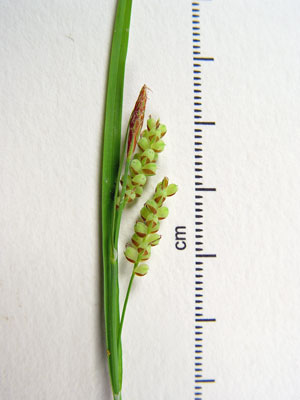DACF Home → Bureaus & Programs → Maine Natural Areas Program → Communities, Plants, and Animals → Rare Plants → Carex garberi

Carex garberi Fern.
Garber's Sedge
- State Rank: S2
- Global Rank: G5
- State Status: Special Concern
Habitat: Circumneutral shores and fens, in openings [Open wetland, not coastal or rivershore (non-forested wetland), non-tidal rivershore (non-forested, seasonally wet)]
Range: New Brunswick south to Maine, west to British Columbia, north to Alaska.

Aids to Identification: Members of this genus can be difficult to identify without careful examination of microscopic features and knowledge of general groups of species. Garber's Sedge is a member of the section Bicolores, a group recognized by its white and gold-orange lenticular-elliptical perigynia with a long sheath on the lowest carpellate bract. Garber’s sedge closely resembles Carex aurea. Garber’s sedge can be recognized by its blunt carpellate scales (acute in C. aurea). Carex garberi also retains its white perigynia in maturity; the perigynia turn orange at maturity for C. aurea.
Ecological characteristics: None noted
Phenology: Fruits in summer.

Family: Cyperaceae
Synonyms: C. garberi Fern. var. bifaria Fern. Also commonly known as Elk Sedge.
Known Distribution in Maine: This rare plant has been documented from a total of 27 towns in the following counties: Aroostook, Kennebec, Lincoln, Penobscot Piscataquis, Somerset .
Reason(s) for rarity: At southern limit of range. Circumneutral habitat in Maine is scarce.
Conservation considerations: The populations are persisting at known locations.

For more information, see the Native Plant Trust's Conservation Plan for Carex garberi.